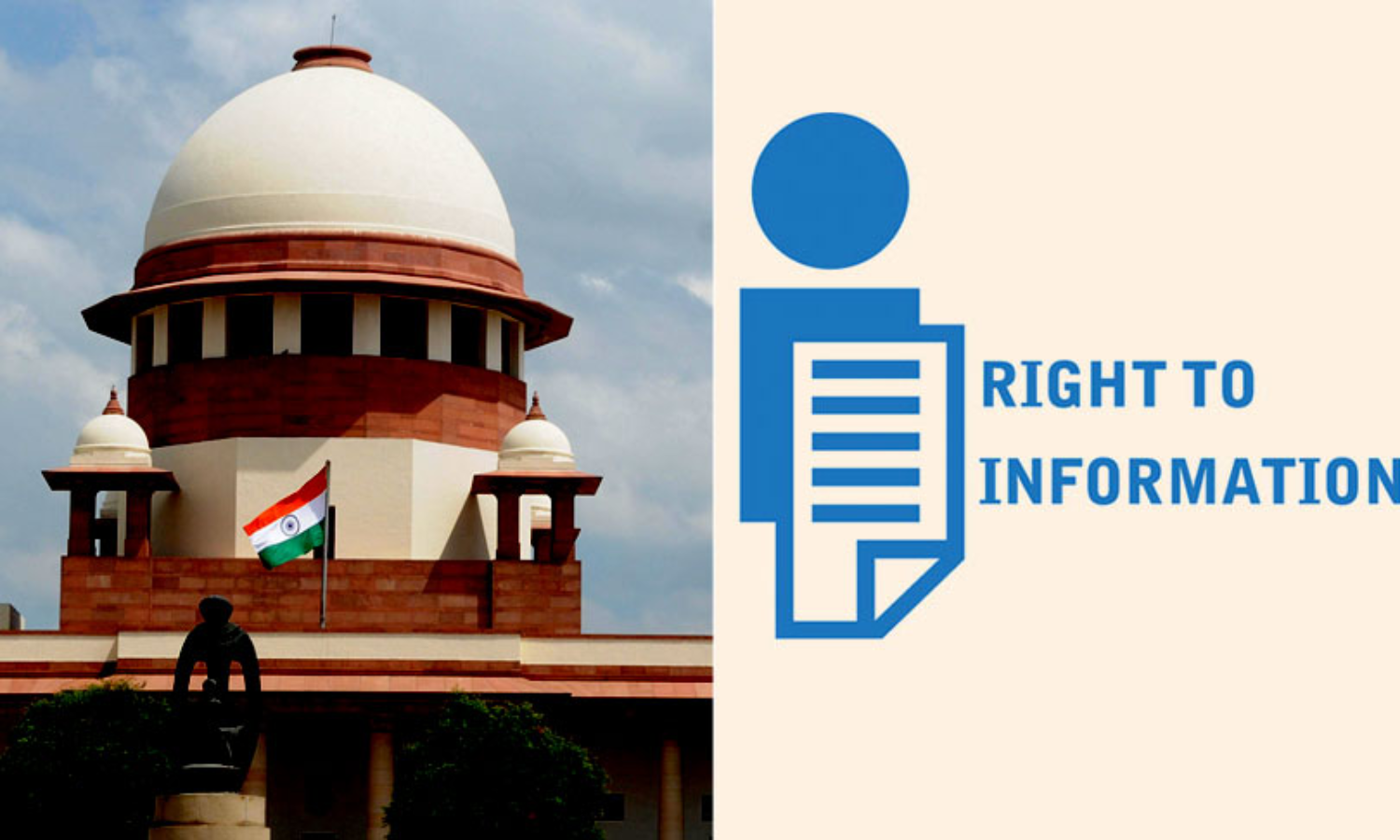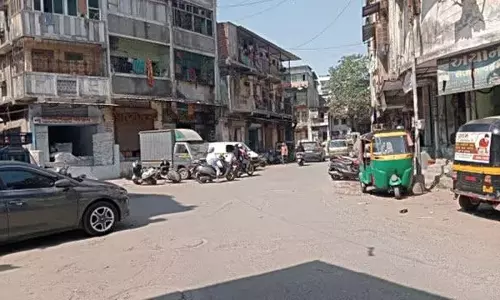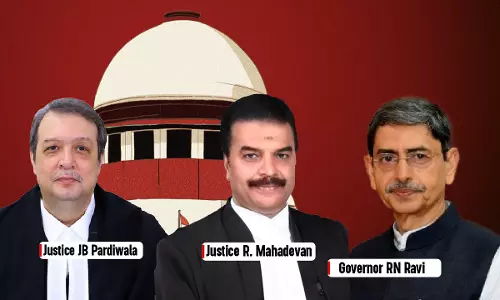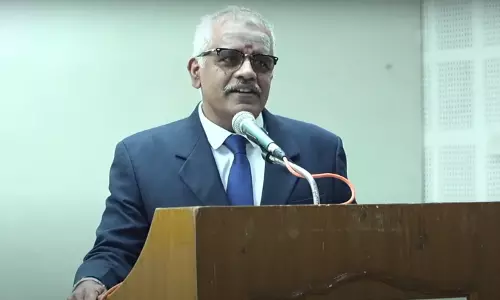Why Won't Judges Agree to Disclose Details of Their Assets?
All other public servants are held to a higher standard of transparency – including by the Supreme Court itself.;

In its judgment on the Right to Information Act on November 13, 2019, the Supreme Court's constitution bench has conveniently ignored Justice Ravindra Bhat's reasoned conclusion about the binding nature of Resolution 1997 to voluntarily disclose judges' asset statements to the chief justice of India. While Justice Bhat held that office of the CJI was a public authority distinct from the...
In its judgment on the Right to Information Act on November 13, 2019, the Supreme Court's constitution bench has conveniently ignored Justice Ravindra Bhat's reasoned conclusion about the binding nature of Resolution 1997 to voluntarily disclose judges' asset statements to the chief justice of India. While Justice Bhat held that office of the CJI was a public authority distinct from the Supreme Court, the apex court rejected this, saying the CJI was an integral part of the Supreme Court as a public authority.
In the 1997, a full-court meeting of the Supreme Court resolved:
"…every Judge should make a declaration of all his/her assets in the form of real estate or investments (held by him/her in his/her own name or in the name of his/her spouse or any person dependent on him/her) within a reasonable time of assuming office and in the case of sitting Judges within a reasonable time of adoption of this Resolution and thereafter whenever any acquisition of a substantial nature is made, it shall be disclosed within a reasonable time."
Now, though, the Supreme Court vehemently opposed the order of the Central Information Commission and Delhi high court to disclose assets-related information for about a decade. It has heavily relied on its own ruling in Indira Jaising vs Registrar General, saying deliberations during 'in house procedure' evolved as a result of the resolution of the Chief Justices Conference in 1999 and cannot be disclosed.
The contention is that the Supreme Court has no disciplinary control over other judges as there was no authorising law, thus it was only moral or ethical power and any exercise of such moral authority leading to a report cannot be compelled to be disclosed. But Justice Bhat of the Delhi high court differentiated it from the facts holding 1997 Resolution did not involve any processes of government.
The Supreme Court argued before the high court that the disclosure of assets information by judges was not a public act or part of the duties of their office – it was voluntary. There is no legal sanction as a result of non-disclosure, and so information about non-disclosure cannot be given. The Supreme Court also said that judges' assets information was personal, and thus exempted under Section 8(1)(j).
The Supreme Court held in Union of India vs Association for Democratic Reforms and People's Union for Civil Liberties vs Union of India that the fundamental rights of citizens, under Article 19(1)(a), includes citizens' right to know the assets and liabilities of candidates contesting elections to parliament or to state legislatures, thereby seeking to hold positions of responsibility in government. Thus, this issue was settled by the Supreme Court.
The common person has to assume that though MPs and judges are public servants, they are not subject to the same rules. Public representatives must be transparent before they contest, and even after an election about their assets every year, whereas for judges, such information is confidential, personal and not related to their office. Voluntary disclosure is only a moral and not a legal obligation, despite the court's own 1997 resolution.
The Resolution of 1997 was a conscious decision taken by judges, so Prashant Bhushan was right when he argued that it has the force of law. Justice Bhat agreed that the binding nature of the resolution cannot be undermined. The Resolution of 1997 or the 1999 Conference Resolution gave authority to the CJI and chief justices of high courts to take appropriate measures as warranted to ensure that the declaration of assets takes place. So why have the chiefs not disclosed what measures were taken?
Delhi bar is for disclosure
One significant aspect of this controversy was that the Delhi High Court Bar Association (DHBA) has intervened and became a party strongly batting for disclosure. The DHBA stated that the issue of judges' asset disclosure should not be considered in isolation, but in the context of the 1999 Conference Resolution. Here too, reference is made to the "in-house" procedure or mechanism to deal with complaints against judges.
Contrasting the position in the case of the lower judiciary, who are obligated by specific service rules to declare their assets, through annual returns, the DHBA submits that such specific rules may not exist in the case of the higher judiciary, yet the duty to do so arises by virtue of the high office their members occupy. The constitution bench of Supreme Court should have considered this point.
The DHBA also referred to observations made by the Supreme Court, in K. Veeraswami vs Union of India and says that judges are "public servants" under the Indian Penal Code.
Judge's duty to ensure public faith
Observations from S.P. Gupta vs Union of India are relied on to say that while an independent judiciary is a must to cure legislative and executive excesses or transgressions of law or the constitution, judges should not claim special privileges and immunities while they impose duties of transparency upon other public officials and legislative candidates.
The constitution has designed elaborate safeguards to secure the tenure, salary and conditions of service of judges, with the aim of insulating them from outside influences, as they are expected to act fairly and fearlessly. This imposes a duty upon them to maintain high standards and ensure public faith. The DHBA relied on observations in the judgment reported as Supreme Court Advocate on Record Association vs Union of India to say that absence of statute law does not mean that declaration of assets by judges to the CJI is without legal sanction; judges function under the constitution, and owe their existence to it.
P.N. Lekhi, appearing for the DHBA, challenged the Supreme Court central public information officer's locus standi and said that they are fighting a "proxy" battle for Supreme Court judges. He submitted that judicial review can be availed of only if there is a lis, and the court should refrain from examining the various issues that are sought to be canvassed in these proceedings. It was argued that what the petitioners are seeking to achieve would strike at the foundation of democracy, under the Indian constitution, and place judges of the higher judiciary above other sections of the people of India, which conflicts with its "basic structure".
It is unfortunate that the bench did not confine itself to the questions at hand but went on reducing the scope of the RTI and expanding the restrictions very wide, leading almost to denial.
Constitutional convention
The Resolutions of Judges were meant to be complied with. Commenting on the lack of any mechanism for the resolution's enforcement, it was argued that the method of dealing with it would be for the CJI to consider. The DHBA argued that the Chief Justices' Conferences, held annually, are not sanctioned by law in the sense understood; each high court is autonomous, under the constitution, and yet no one questions this annual practice, for which considerable public expenditure is incurred.
These, say the interveners, establish that the foundations of the obligation (to declare personal assets) are not confined to the provisions of the constitution, or any law, but on conventions and practices which develop around them, and crystallise into binding norms. The DHBA relied upon the judgment of the Supreme Court's nine-judge Bench, in the Supreme Court Advocates on Record Association case.
All power – judicial power being no exception – is held accountable in a modern constitution. Holders of power too are expected to live by the standards they set, interpret or enforce, at least to the extent their office demands. Conventions and practices, long followed, are known to be binding upon those concerned. For instance, the Supreme Court concluded, in that case, that the practice of accepting the Chief Justice of India's advice, for the appointment of judges, had resulted in a binding convention.
The 1997 Resolution (and the 1999 Judicial Conference Resolution) were intended to reflect best practices to be followed. Justice Bhat observed:
"…independence and impartiality of judges are "core" judicial values. There are others, equally, if not more important. Those values – or canons, as the 1999 Judicial Conference Resolution puts it – flesh out what all judges should conform to, such as avoidance of certain types of conduct, rectitude in public and private life, avoidance of any relationship that could potentially conflict with judicial functions, avoidance of spouses' and children practicing in the Court of the judge concerned, prohibition of certain kinds of investment, avoiding airing views by the judge in the press or newspaper (in sensitive or controversial matters, or those likely to be considered by the Court) and so on. That these canons are an inalienable part of what a judge is and how he or she is expected to behave, is not doubted."
He further affirmed:
"The declaration of assets by such judges to their respective Chief Justices was a part of that codification process; the 1999 Judicial Conference Resolution sees the 1997 Resolution (of the Supreme Court) as such. It might arguably be stated that no such norm existed, before the 1997 Resolution, requiring declaration of assets by judges. That might be so; yet such ethical norms are neither static nor are in a vacuum. They are in one sense universal (as in the case of the need to be unbiased, impartial, independent and maintain probity and rectitude); at the same time, they are contextual to the times – particularly when they pertain to the kinds of behaviour, relationships and investments that could be deemed acceptable – or not acceptable- having regard to a judge's role and challenges faced by Court during particular times. Seen from this dynamic, norms of judicial ethics are placed in a continuum, evolving with contemporary challenges. Therefore, the introduction of the stipulation of declaring personal assets, is to be seen as an essential ingredient of contemporary acceptable behaviour and establishing a convention."
He also stated that:
"…the volitional nature of the resolutions, should be seen as the higher judiciary's commitment to essential ethical behaviour, and its resolve to abide by it. Therefore, that such need to declare assets is not mandated by Parliamentary law, or any statutory instrument, becomes of secondary importance. The mere fact that Supreme Court judges (through the 1997 Resolution) and members of the higher judiciary (through the Judicial Conference Resolution) recognize these as normative, and governing their conduct, is sufficient to bind them….The resolutions and decisions are taken seriously, and with the intention of implementation. To put it otherwise, the resolutions were made (and similar resolutions, are made) to be followed and adhered to. In these circumstances, it would be robbing the solemnity of the Resolutions adopted in 1997 to say that they were made with the expectation of not being implemented". (Paragraph 50 of Ravindra Bhat's judgment). Referring to enforceability, the judge said: "enforceability should be seen in the context of a given situation. Peer pressure, the administrative options available with the CJI and the Chief Justices of High Courts, would be weighed carefully, with the aim of seeing that asset declarations are made."
Justice Bhat said he cannot be unmindful of the fact that several categories of public servants, including Central and state government servants, as well as public sector employees and officers of statutory corporations, are required by service rules to declare their assets periodically. Settled procedures have been prescribed, for how often such disclosures have been made and in what form. Finally, he directed the Supreme Court to give information.
The answer was probably simple – 'yes' or 'no' on whether assets reports were submitted, and how many (if any) judges had disclosed such reports. Hypothetically, a 'no' or 'zero' answer could have closed the RTI application and the Central Information Commission would not be involved. But the Supreme Court challenged Justice Bhat's order in the LPA, which confirmed it and then took the matter to a constitution bench.
After almost a decade of time and energy being spent fighting and resisting the disclosure of information about judges' assets, the Supreme Court is still to examine the public interest aspect. Having dealt in detail with all the matters concerning the entire RTI Act, the SC conspicuously left out the aspect of public interest of an RTI application. Though it elaborately discussed the concept of public interest, it did not say whether disclosure of assets-related information is in the public interest.
Legacy of Lal Bahadur Shastri
In the 1960s, former Prime Minister Lal Bahadur Shastri initiated asset declaration as a part of probity in public life. In 1964, a Code of Conduct was introduced for ministers to make assets declaration to chief ministers and the prime minister. But very few took it seriously. The Second Administrative Reforms Commission recommended the conduct code be placed in public domain. The PMO started uploading the status of compliance with the code and publicly displayed the contents of the declarations also. The prime minister also complied with this requirement. One can now access the assets declared by Union ministers online.
The state of Bihar, which is accused of lagging behind of development and misgovernance, launched an assets information disclosure system in 2011. From the chief minister to a peon, each public servant must reveal assets information, which can be accessed through a web portal.
The Lokpal and Lokayuktas Act, which was the result of a people's agitation, mandates under Section 44 the public disclosure of assets of categories of public servants, their spouses and dependents. Under pressure from bureaucrats, the government amended this Act. The amended section says public servants must declare assets only to the heads of their department. This is another example of how in India we don't repeal laws, we just kill them by non-implementation and 'amendment'.
This government, which promised to be clean, provided a system to keep assets declarations inaccessible. Several executive orders were issued which continuously postponed the last date for submitting asset declarations by public servants.
The spouses of public servants approached the Delhi high court, saying that the law was against their right to privacy as it mandates their partners to disclose their personal assets and liabilities. A bench of the Delhi high court directed on September 24, 2014, that information of asset liabilities of spouses or dependent children should not be revealed to the public by the government departments (Vinita Singla vs Union of India). They should be in a sealed cover.
As per rules under the Lokpal and Lokayuktas Act, 2013, every public servant shall file a declaration, information and annual returns pertaining to their assets and liabilities as on March 31 every year on or before July 31 of that year. For 2014, last date was September 15. First it was extended till December 2014, then till April 30, 2015, and the third extension was up to October 15, then till April 15. Around 50 lakh central government employees were asked by the DoPT to file property returns for three years (2014-16) by July 31, 2016. A day before this judgment came, the Meghalaya Lokayukta on November 12, 2019, directed all state government employees to declare their assets and liabilities, including those held by spouses and children.
Senior advocate Prashant Bhushan wrote 600 letters to judges requesting them to voluntarily declare their assets in 2009. Two judges of the Karnataka and Punjab and Haryana high courts responded and declared their assets. In July 2018, 29 out of 35 judges of the Delhi high court declared their assets. But judges of only seven out of the 24 high courts came forward to declare their assets. And out of 27 Supreme Court judges, only seven have declared their assets, as per media reports.
It is relevant to refer to Sri Lanka, which made a law – Declaration of Assets and Liabilities Law (Act 1 of 1975) – requiring judges, among others, to declare their assets at the time of their appointment. Many African countries have also passed such legislations.
Thus, in a constitutionally governed state with the right to equality before the law and equal protection of law, we cannot have many classes of public servants with different transparency obligations. Is that equality and justice, My Lords?
M. Sridhar Acharyulu is a former central information commissioner and dean, School of Law, Bennett University.
This article was first published in The Wire. You can read it here




